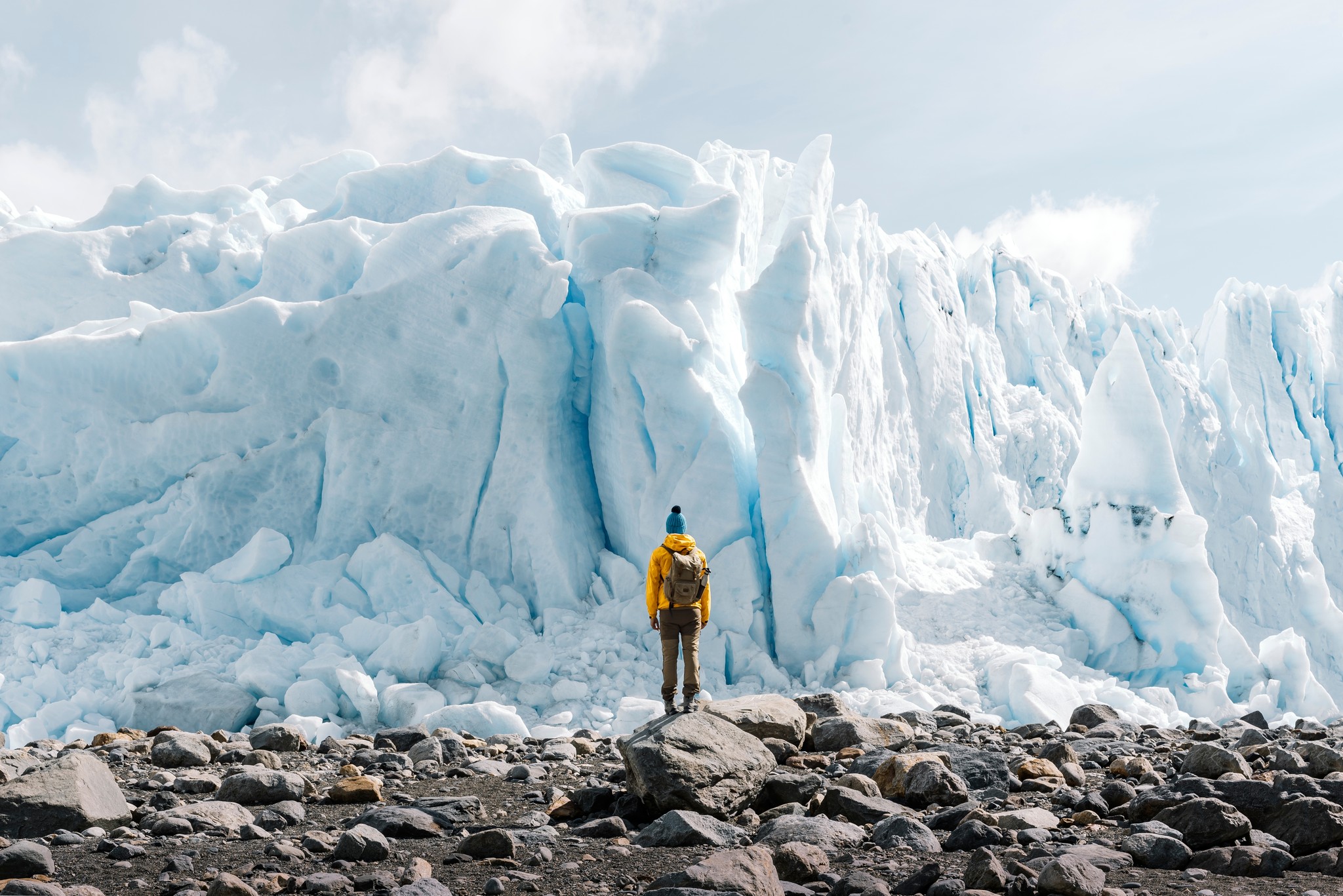Ready to rethink how you explore the world? These five smart, simple suggestions will help you travel more sustainably (and save money in the process) without missing out on the adventure.
Polarsteps was born out of a deep love for travel — for the way it connects people, broadens perspectives, and creates unforgettable experiences. But we’re also aware of the negative effects that tourism can sometimes have on destinations, and the responsibility we carry when inspiring our 15M+ users to explore the planet.
Our travel editors have researched and written about hundreds of destinations on six continents, and keep environmental, cultural, and socio-economic sustainability top of mind when recommending where to go and what to do. Here are our tips.

Toomas Tartes/Unsplash
Seek out the less-traveled road
Must-see destinations are popular for a reason, so it’s natural for travelers to add them to their itinerary. However, visiting the same sites as everyone else can put pressure on the local infrastructure — and your experience might not live up to expectations (cue all those “Instagram vs reality” posts).
As a travel app, we can’t ignore must-visit destinations, but we aim to approach them in a more sustainable way. For Venice, Claire pointed travelers toward the city’s more overlooked islands — the crowd-free and characterful Murano and Burano, which are smaller versions of central Venice, or Isola di Sant’Erasmo and Isola della Certosa, where locals escape to hike, swim, and picnic in relative solitude.
Senior Travel Editor Brin Andrews tackled Machu Picchu in the same way, by suggesting alternative hiking routes to the Lost City. “Most visitors hike the four-day Inca Trail to reach Machu Picchu,’ she says. ‘But The Salkantay Trail is an awesome alternative — a beautiful, 60km trek with the bonus of a geothermal pool at the end. For more solitude and adventure, the 70km Ausangate Trail through the mountains offers another spectacularly scenic route to the Lost City.”
Sometimes, the best option is to pull focus to discover sites that other visitors overlook. So, in our Thailand coverage, alongside well-known islands like Koh Samui, you’ll find inspiration and tips for how to reach low-key, undeveloped alternatives like Koh Libong, Koh Phra Thong, and more.

StanislavBeloglazov/Shutterstock
Ask yourself how local communities will benefit from your visit
One of the cornerstones of sustainable travel is to ensure that the money you spend goes straight into the hands of locals or benefits the community in some other way — whether that’s joining a beach clean-up or supporting a social enterprise.
It’s worth spending time researching locally owned businesses, from independent tour operators to artisan-led workshops and family-run guesthouses. If you choose a hostel or hotel chain, take a look at its sustainability policy. Companies that invest in employing and training local people, reinvesting in the area, and reducing their environmental footprint can make a positive difference at scale.
Ask yourself what you want to see in a country — and why. Although it’s fascinating to learn about cultures different from our own, there’s a big difference between cultural appreciation and treating people as a tourist attraction. Communities such as the Karen people of northern Thailand, or the Colombian inhabitants of the artificial island of Santa Cruz del Islote, earn money from visitors wanting to see their way of life, but participating in these “human-zoo” transactions can contribute to exploitation and perpetuate poverty.
When I was researching the floating villages of Lake Titicaca, I wanted to inspire travelers to stay overnight on these artificial islands woven from totora reeds by the Uros people who inhabit them. Everyone gets more connection and understanding out of an overnight experience, and the money you spend on a bed, meals, and activities with your host benefits the whole community. It beats sailing past the islands on a boat tour, snapping photos of residents as they go about their everyday lives. It also means that Uros people themselves can tell you about their way of life, rather than someone from outside the community.
Bear in mind, too, that not all public events welcome spectators. You’ll get the most out of cultural experiences that explicitly invite visitors — like the elaborate funeral processions of Tana Toraja, a village on Sulawesi that’s renowned for its death rituals. In Torajan culture, families save for years to give their departed loved ones a fitting ceremony, caring for the body in the meantime. Usually the death ceremony is a very public event, where you can expect processions, animal sacrifices, embalmed bodies, and crowds of extended family and community members.

Claudio Soldi/Shutterstock
Honor the world’s wildlife
One of the trickiest parts of our job as travel editors is working out which wildlife encounters are genuinely sustainable and beneficial to the animals involved — sadly, very few enterprises meet our high standards for inclusion. This area of tourism is especially vulnerable to greenwashing.
For example, Thailand is home to many elephant “sanctuaries” that no longer allow riding, but still permit feeding and washing as tourist activities. With groups of visitors arriving hourly, the elephants are always at work, and are often overfed and overstimulated. Similarly, some turtle conservation centers aim to improve hatchlings’ chances of survival in the wild, but predators like seagulls have learned to target the release events. Crowds of well-meaning volunteers can also disturb nesting females and deter them from staying with their eggs.
If you decide to interact with wild animals on your travels, it’s worth doing a bit of research to find an operator that aligns with your values. The most rewarding, cruelty-free experiences come from businesses that maintain a proper distance, refrain from feeding or touching the animals, and don't interfere with their natural behaviour in any way.
For example, Travel Editor Matt Bainbridge explored this topic in his Guide to Iquitos, a gateway to Peru’s Amazon and home to the popular Isla de los Monos (Monkey Island). “I had to make a call about whether to include this rescue center in the Guide or not. In the end, despite this being one of the biggest tourist draws in Iquitos, I decided to leave it out of the Polarsteps Guide, focusing instead on excursions into the Amazon and the rehabilitation center for aquatic animals.”

Raul Taciu/Unsplash
Embrace off-season travel
This might mean visiting at the very start or tail end of the peak season, choosing spring or autumn instead of summer, or booking in low season. The “shoulder season” isn’t always the second-best option — those in-between months bring their own perks, as well as fewer crowds and cheaper accommodation.
When Senior Travel Editor Claire Bissell wrote the Polarsteps Guide to Venice, she wanted to avoid contributing to the city’s overcrowding problem. Her advice? “From November to March, tourist numbers are at their lowest. The weather may be a little colder, but the mist that hangs over the canals (and the almost-empty streets!) make the city more atmospheric than in summer.”
Another way to game the seasons is to use insider knowledge. Indonesia, for example, is packed with world-class surf spots, but not all of its waves are at their peak at the same time of year. Java’s Alas Purwo national park offers optimal surf conditions during the wet season (Nov–Mar), whereas in Medewi and Uluwatu, on Bali, the best swells coincide with the dry season (Apr–Oct).
Low season is also your best chance of experiencing a destination as locals do. For example, southern European towns and cities like Cinque Terre or Seville offer mild, sunny weather in winter, local festivals, and — in contrast to the summer hordes — streets that are tourist-free. (Just be careful that the destination you have in mind doesn’t completely close for the winter!)

Kamil Kalkan/Unsplash
Explore cities on foot, by bike, or public transport
This is a win-win — by navigating a city the way locals do, you get a real feel for the place, move at its natural pace, get some exercise (great for combating jetlag!), and save money on tours that simply shuttle visitors from one landmark to the next.
Some of the best sightseeing can be done via public transport. The Chao Praya Express in Bangkok takes passengers downriver for a fraction of the cost of the tourist boats, passing Wat Pho, Wat Arun, and the Grand Palace along the way. In Istanbul, catching the ferry across the Bosphorus rewards you with beautiful skyline views, especially at sunset. Lisbon’s number 28 tram trundles past most of the city’s key sites (and saves your legs a few hilly climbs!). San Francisco offers loads of ways to see the city — rent a scooter (adaptive models available), hike from the southwest to the northeast on the Crosstown Trail, or hop on one of its famous cable cars.
For the most adventurous rail journeys in the world, check out Claire’s top 10 train journeys!
And if you like to hike or bike, why stop at a city? Some of our most adventurous Polarsteps Explorers have crossed entire countries — and even continents — in low-carbon style! New Zealand’s Te Araroa Trail stretches 3,000km from the tip of the North Island to the very bottom of the South Island, taking around 120 days to complete. Or follow in the tire tracks of Polarsteps cyclists who’ve taken on famous trails like the Bartang Valley Route, pedaling all the way from Europe to Asia. By overlanding wherever possible, they’re choosing the most adventurous path while consciously avoiding the environmental cost of flying.
Choosing to travel in a sustainable way is a lifelong learning journey. If you do your research, keep ethical and environmental considerations in mind when planning your itinerary, and travel in a way that gives something back, you’ll leave the places you visit better than you found them. And if you’re looking for tips, our Guides to Asia, South America, North America, Oceania, Africa, and Europe are a great place to start planning!
Cover image: JK/Unsplash



